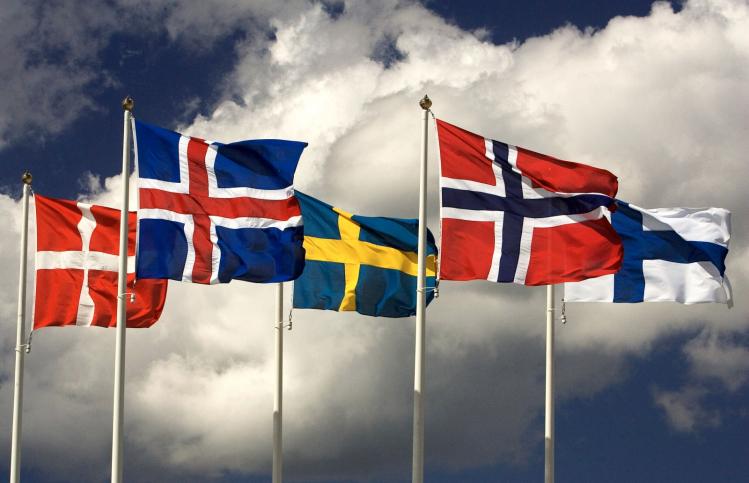
From the “welfare-reform” efforts of the 1990s to the strictly income-dependent benefits of the Affordable Care Act, means-testing has dominated the past several decades of center-left policy discussion in the United States. According to this conventional wisdom, mostly associated with the Democratic Leadership Council, targeting social benefits to low-income individuals was a fiscal and moral necessity. Means-tested programs—such as food stamps, Medicaid, and Temporary Assistance for Needy Families—were preferable because they’re relatively cheap and give benefits only to those who “truly need them.”
But the influence of means-testing may be starting to wane. The surge of support for Bernie Sanders in his 2016 run against Hillary Clinton showed that many young voters had an appetite for bolder, more ambitious policies. And for a number of 2020 presidential candidates, “universal” has become a buzzword: Elizabeth Warren wants universal childcare, Kamala Harris calls for universal pre-k, and, of course, Sanders continues to champion a universal, single-payer health-insurance program. It’s debatable whether or not all these policies are genuinely universal, but there’s no disputing that such appeals have become newly prominent in the platforms of high-level Democratic office seekers.
There are good reasons to back such universal programs. All social policy, as the noted welfare-state scholar Gøsta Esping-Andersen argues, either reinforces or removes class stratifications. A welfare regime based on means-testing and income targeting does the former; it necessarily divides those who receive benefits from those who don’t. That leads non-recipients to grumble about having to subsidize an underclass of moochers, while recipients are subject to dehumanizing stigma. Such programs tend to be socially divisive and politically unstable. In contrast, universal programs promise to transcend existing economic cleavages and create broad social solidarity, because everyone benefits; this solidarity, in turn, helps protect universal programs from political attack.
Many politicians and analysts in the United States insisting on the necessity of universal programs make arguments along these lines. They also hold up the Nordic welfare states as models, proof that such programs are more than just progressive fantasies. It’s obvious why: Sweden, Finland, and Norway have been enviably successful in attacking poverty and inequality. But a careful look at these nations delivers mixed news to universalists: truly egalitarian social policy requires a great deal more than just slapping the word “universal” on your latest white paper. Rather, the best welfare states in the world go well beyond universalism, creating programs of such quality that the private market for social goods is barely allowed to exist. Doing welfare policy like a Norwegian or a Finn or a Swede requires a boatload of money, a sophisticated understanding of political economy, and a politics that is explicitly antagonistic toward “market solutions” to social problems.
Those familiar with arguments about the Nordic welfare states might expect a disclaimer: these countries are small and ethnically homogeneous, and thus nothing like the heterogeneous, fractious United States, with its ethnic and racial tensions. Ultimately, those differences don’t prohibit useful comparisons. Broad social cohesion in the Nordics didn’t appear out of thin air; deep political cleavages were overcome through the arduous work of coalition building. Social-democratic parties representing highly organized labor movements managed, with considerable political ingenuity, to forge alliances with agricultural interests and then middle-class professionals. To claim that Nordic egalitarianism is innate is simply ahistorical: equality and social cohesion in these countries are distinctly political phenomena. Arguments based on the size of the Nordics are even less persuasive. The United States, the richest nation in the history of the world, has far more resources with which to create generous welfare programs than did, say, early-twentieth-century Finland. Doing so is a matter of political will, not just demographics or geography.
The most elegant description of the logic behind Nordic social policy is laid out in a classic 1998 paper by the Swedish academics Walter Korpi and Joakim Palme (the son of iconic Swedish prime minister Olof Palme). In the article “The Paradox of Redistribution and Strategies of Equality,” Korpi and Palme study social-insurance institutions and how different policy strategies produce different levels of poverty and inequality. While the paper focuses on social insurance—such as unemployment insurance or old-age pensions—the logic behind such programs is also applicable to welfare services like health care.
The two authors are skeptical of welfare programs based on a strategy of targeting, in which only those who demonstrate need are eligible to receive benefits. Programs that explicitly target the poor are, in reality, quite unsuccessful at reducing poverty. This is primarily for reasons of political economy: the constituency for such programs is both small and traditionally powerless, so targeted benefits are vulnerable to right-wing attack. Programs for the poor are, as the saying goes, usually poor programs.
But Korpi and Palme are also, perhaps surprisingly, unimpressed by social-insurance programs that follow what they call the “basic-security” model. These programs, inspired by the post-war Beveridge plan (the basis for a sweeping set of social-insurance institutions, as well as the U.K.’s National Health Service) give the same benefit to everyone. They are undoubtedly universal, and yet countries with basic-security programs have significantly higher poverty and inequality than the Nordic countries. Why?
The best welfare systems in the world are based not just on a preference for universalism over means-testing, but also on a preference for state provision of social benefits over market provision of social benefits. Markets, of course, are just one among many ways of setting prices; the targeted use of markets could even be preserved in a democratic-socialist economy. But when it comes to basic necessities—health care, education, pensions—markets cannot be allowed to persist. Indeed, the architects of the Swedish, Finnish, and Norwegian welfare states recognized that when markets are involved in delivering social benefits, inequality will be higher than if an egalitarian-minded state crowds out private sources. When these basic necessities are allocated solely on an individual’s success in the labor market, existing inequalities only compound. It’s no wonder that Esping-Andersen’s survey of European social democracy is entitled “Politics Against Markets.”
The basic-security model fails because, despite being universal, it does not crowd out the private sector. Middle-class families will find that most flat-rate benefits aren’t high enough to meet their standards, so they will turn to the market for additional benefits. Disparities grow between those who have the resources to purchase private pensions, for example, and those who do not. Flat-rate universal benefits merely “establish a base” upon which the market stratification continues to persist, with all its inherent inequalities. The fact that a program is universal doesn’t tell you anything about the quality of that program. A social-insurance benefit can be flat-rate but meager; public daycare centers can be available to all but poorly run.
Nordic social policy, on the other hand, aims to provide cash transfers and welfare services that satisfy exacting middle-class standards. This, the reasoning goes, is the only way to get the market out of the business of social-good provision. Korpi and Palme describe the Nordic welfare states as “encompassing” because state benefits come to swallow the market for social goods. In the Nordic welfare world, there’s only one game in town.
In the realm of welfare services—elder care, childcare, health care—creating encompassing institutions is fairly straightforward: the state offers high-quality services to everyone. Middle-class households won’t explore private alternatives because their high standards are met by the government; their satisfaction with excellent public services encourages political loyalty to the welfare state. Meanwhile, working-class and poor folks will have access to far-better services than what they could pay for out of pocket. Gustav Möller, a major architect of the Swedish welfare state, explained the encompassing approach succinctly: “Only the best is good enough for the people.”
Encompassing social-insurance institutions, on the other hand, might be objectionable to Americans on the left, as they may allocate more resources to those in the professional classes than those less well-off. Most of the Nordic countries have elected to create pension programs that include everyone but give higher benefits to those who earned more money while they were working. This will be off-putting at first glance to any egalitarian. And yet such programs exist at the core of the most equal welfare states in the world because, while these programs produce unequal outcomes, those outcomes are less unequal than what would result if private alternatives were permitted to seep into welfare provision. In the Nordics, avoiding welfare retrenchment requires middle-class buy-in, as middle-class voters face a high tax burden and have a pesky habit of deciding elections.
In 1950s Sweden, for example, social-democratic leaders recognized a concerning demographic trend: the industrial working class, their political base, was shrinking rapidly, and the middle class was ascendant. The existing government pension—a flat “People’s Pension,” in line with the basic-security model—was insufficient to meet the standards of this growing middle class. And so the social democrats made a brilliant political play: on top of the “People’s Pension” they created a supplementary pension scaled to a worker’s career earnings. It was a brazen attempt to preserve the party’s relevance—and it worked. In the post-reform pension arrangement, the interests of the working-class base and the growing middle class came together, strengthening both the program and the party that championed it.
By bringing all citizens together into big-tent welfare programs, and by ensuring that the middle class doesn’t pursue private alternatives, Nordic social democrats encourage broad social solidarity through cross-class alliances. The encompassing model works in two critical ways: by getting the market out of social provision, and by creating broad political coalitions to ensure programs can withstand unfriendly governments.
The welfare state in the United States looks nothing like the Nordic model, of course. But Americans who hope to emulate Northern Europe should learn two lessons, one related to budget priorities and another related to political strategy.
First, Nordic social policy reveals that there are no shortcuts to egalitarianism; if you want low poverty and inequality, you have to spend a lot of money. The key to the Nordic model is crowding out the market through meeting middle-class standards—and meeting middle-class standards isn’t cheap. Throughout the comparative research on Western welfare states, one variable predicts egalitarian outcomes better than any other: public welfare spending. In 2017, Matt Bruenig, the founder of the People’s Policy Project, calculated that if the United States were to meet Swedish levels of public social expenditure, it would have to increase its welfare budget by around $15 trillion over the next ten years. Meeting Finnish levels means a $22 trillion increase. What kind of welfare state reduces poverty and inequality? A really big one.
A left that learns from the Nordic experience would also make serious attempts to win over middle-class voters. Many leftists will surely be wary of calls to appeal to white-collar professionals, and with good reason: in recent decades, social-democratic outreach to the middle class has taken the form of neoliberalism and the Third Way. But winning over these voters doesn’t have to mean cutting taxes. Building a resilient welfare state requires building a highly organized base in the labor movement; this task must be a priority of the American left. But it also means forming coalitions in which the interests of the working and middle classes converge.
These efforts are based on both a normative premise and a strategic premise: that encompassing social programs are for everyone, and that a generous welfare state cannot withstand intense opposition from those whose tax dollars are required to sustain it. Such notions take us toward a politics that recognizes the satisfaction of social needs as a communal responsibility, that builds broad solidarity around preserving public goods, and that doesn’t fret over spending some cash.
Please email comments to [email protected] and join the conversation on our Facebook page.
Previous Story
The Fifth Avenue Theory
Next Story
Nationalism Without Idolatry
